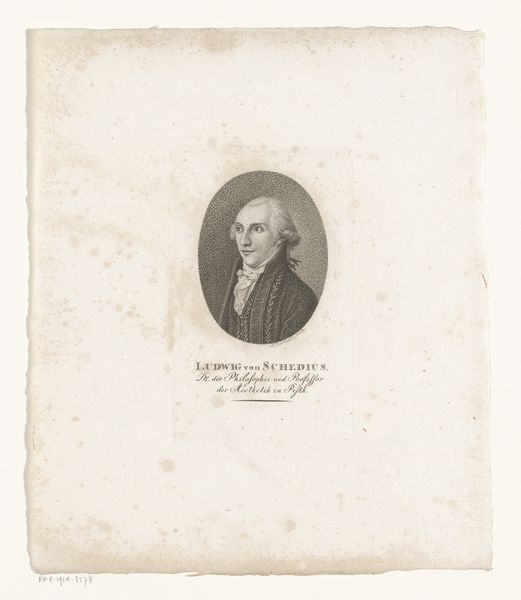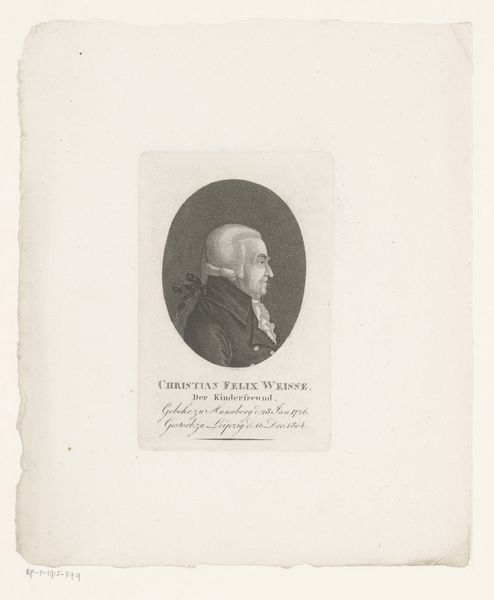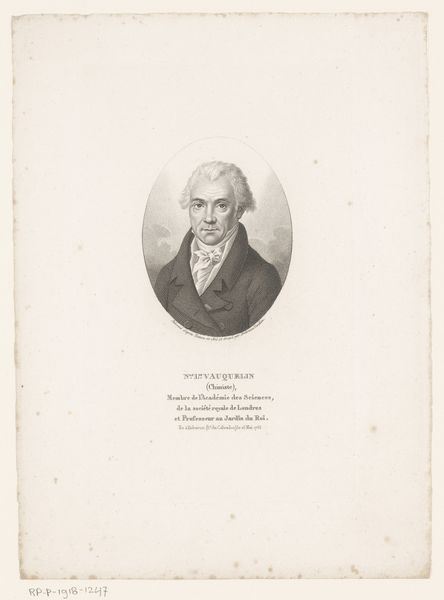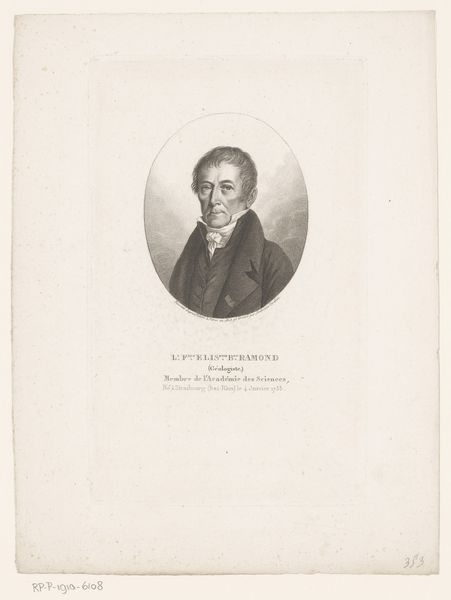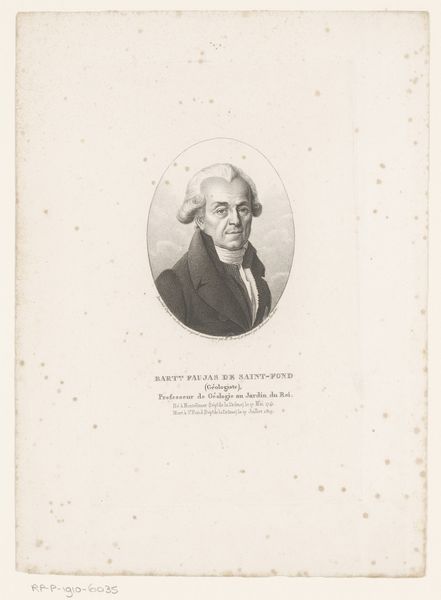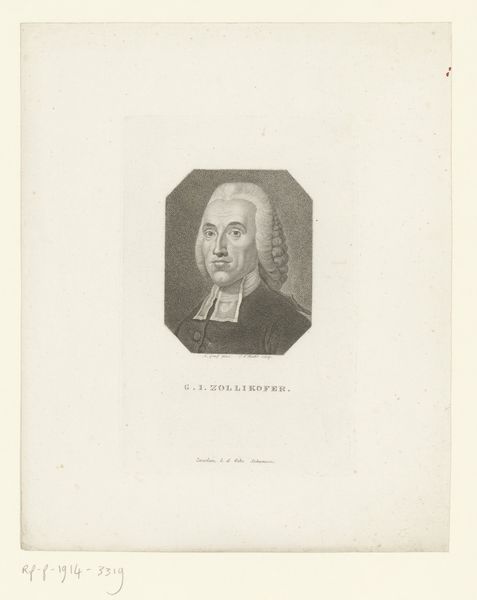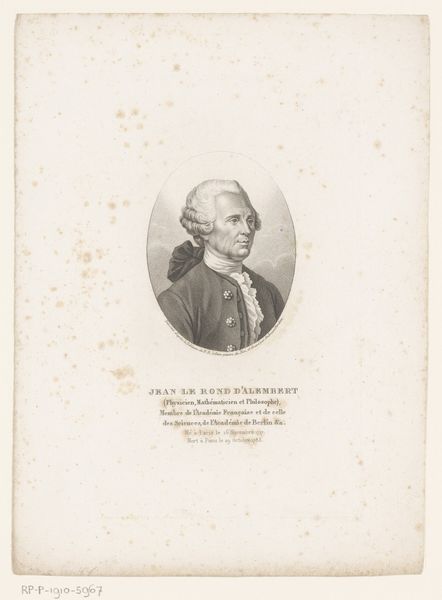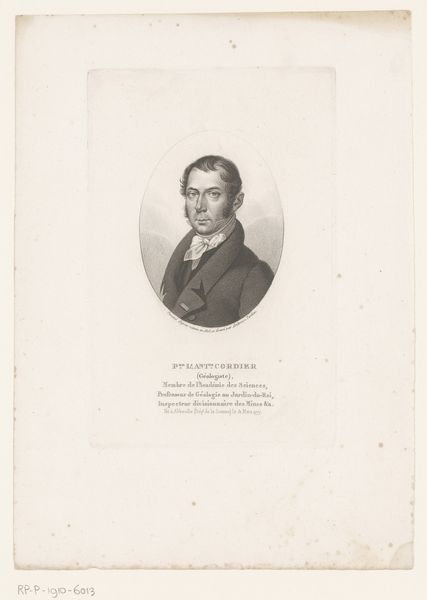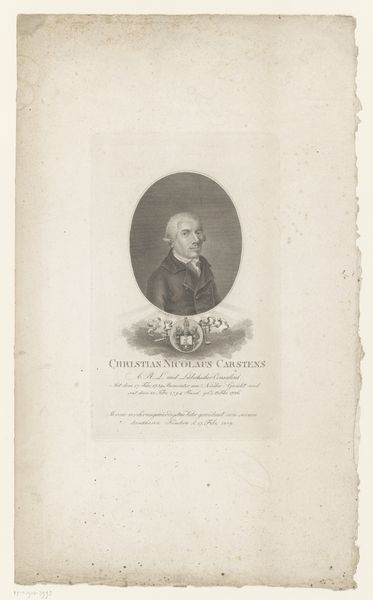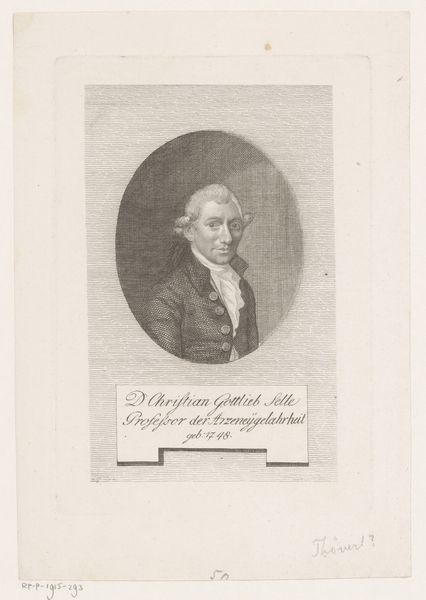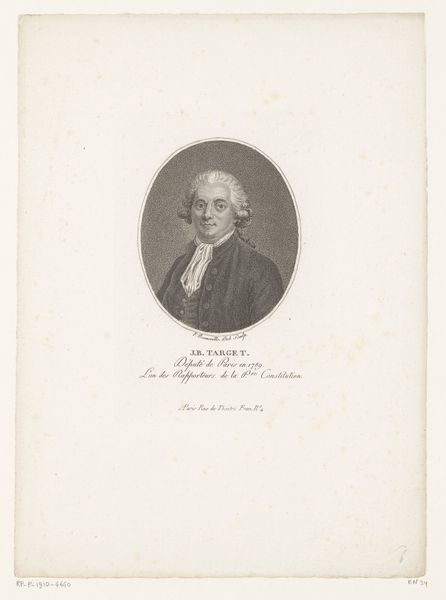
Portret van natuurkundige Giovanni Battista Venturi 1772 - 1841
0:00
0:00
francescorosaspina
Rijksmuseum
print, engraving
#
portrait
#
neoclacissism
# print
#
engraving
Dimensions: height 243 mm, width 189 mm
Copyright: Rijks Museum: Open Domain
Editor: This is a portrait of physicist Giovanni Battista Venturi, an engraving by Francesco Rosaspina, dating from 1772 to 1841. It seems pretty formal. What can you tell me about it? Curator: It's interesting to consider how neoclassicism, evident in its clean lines and focus on reason, coincided with significant shifts in scientific understanding and revolutionary societal upheaval. How do you see Venturi's portrayal fitting into these contexts? Editor: I see how the formal pose and neoclassical style reflect the Enlightenment’s emphasis on reason, but what about the social aspect? Curator: Venturi's success as a scientist was tied to his access to education and patronage. The portrait functions as a celebration of individual achievement, sure, but what about access and representation? Think about who typically got to have their portraits done, and the social structures that enabled that. This image is an elite individual celebrated using new classist conventions, but we have to keep in mind whose stories are being excluded through such forms. Editor: That's a good point. It seems like he's a symbol of an era of scientific advancement, but it doesn’t reflect broader social inequalities. How should we approach such art from the past, without replicating this inequality? Curator: Acknowledging these absences is crucial. We can use works like this as a springboard to explore the diverse contributions and experiences often left out of the dominant historical narrative, to challenge conventional notions of success. What do you make of the limited range of his personal features? Editor: It gives this overwhelming sense of bland perfection, erasing the struggles of real lived experience. That can be very misleading and unhelpful. Curator: Precisely! By engaging with art from this critical perspective, we can have very enlightening dialogue with our inheritance, even while seeing its profound problems. Editor: Absolutely. It helps contextualize not only art but also larger issues around privilege and power in history.
Comments
No comments
Be the first to comment and join the conversation on the ultimate creative platform.


